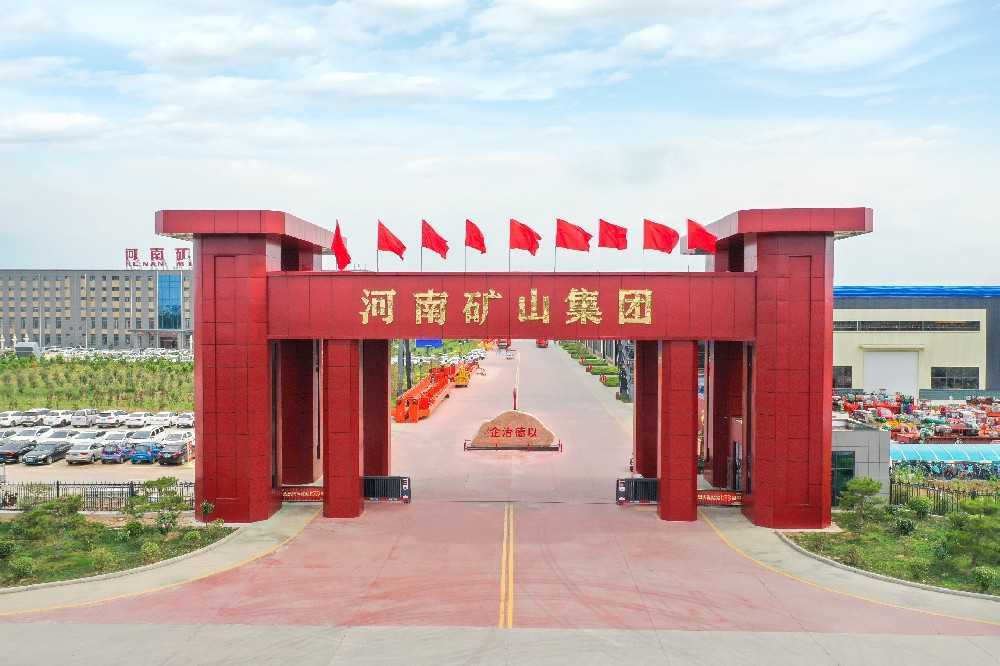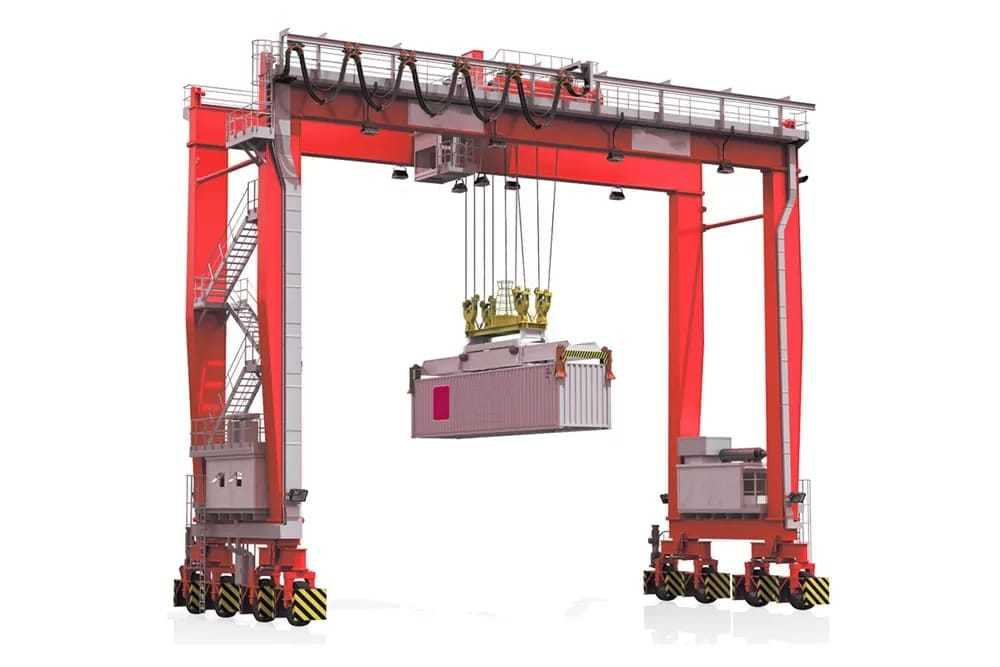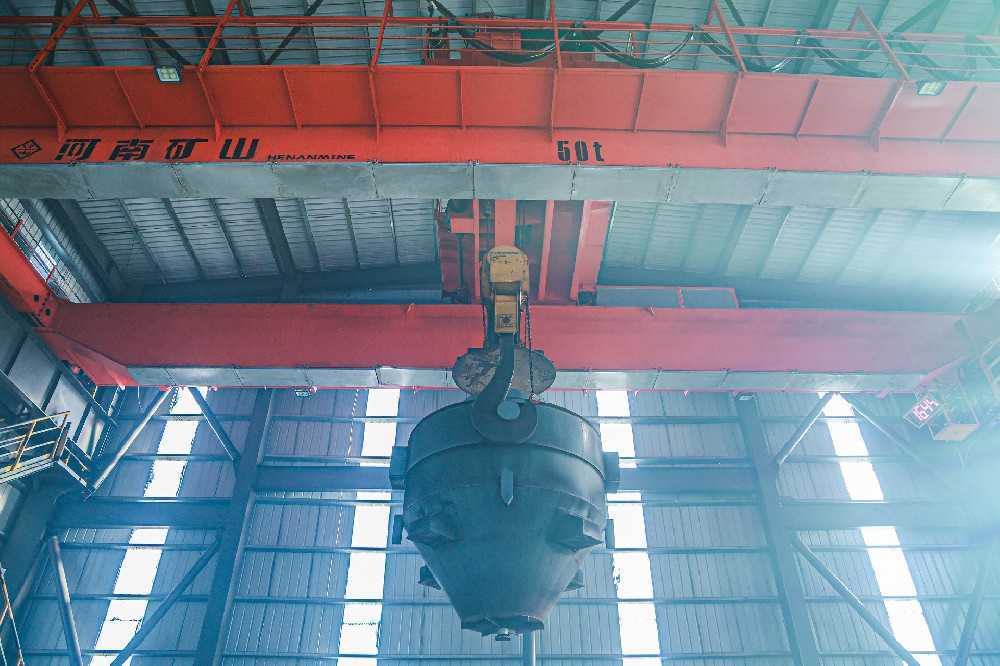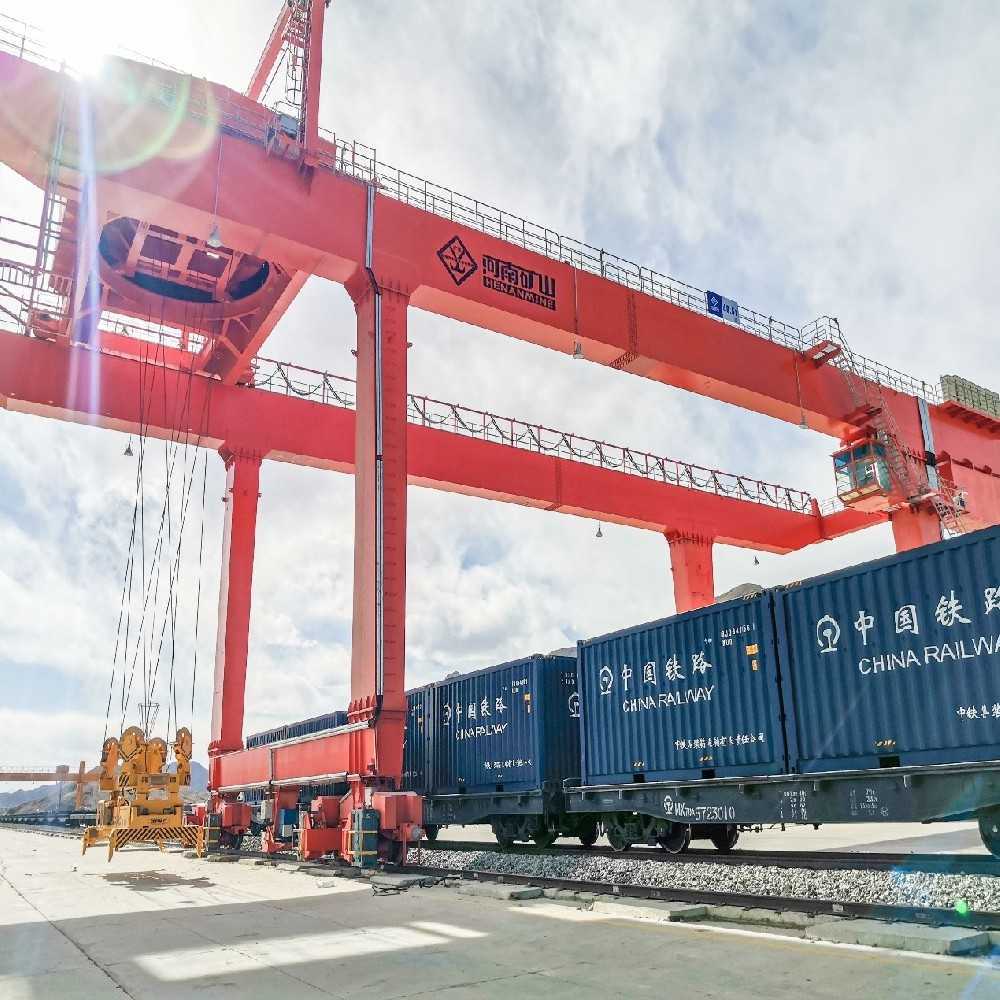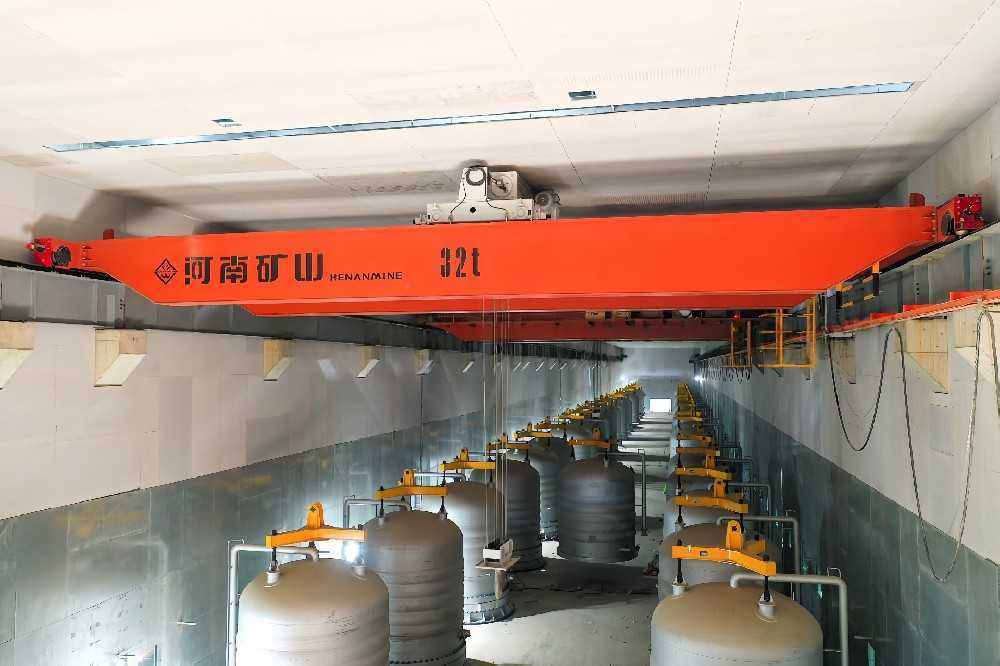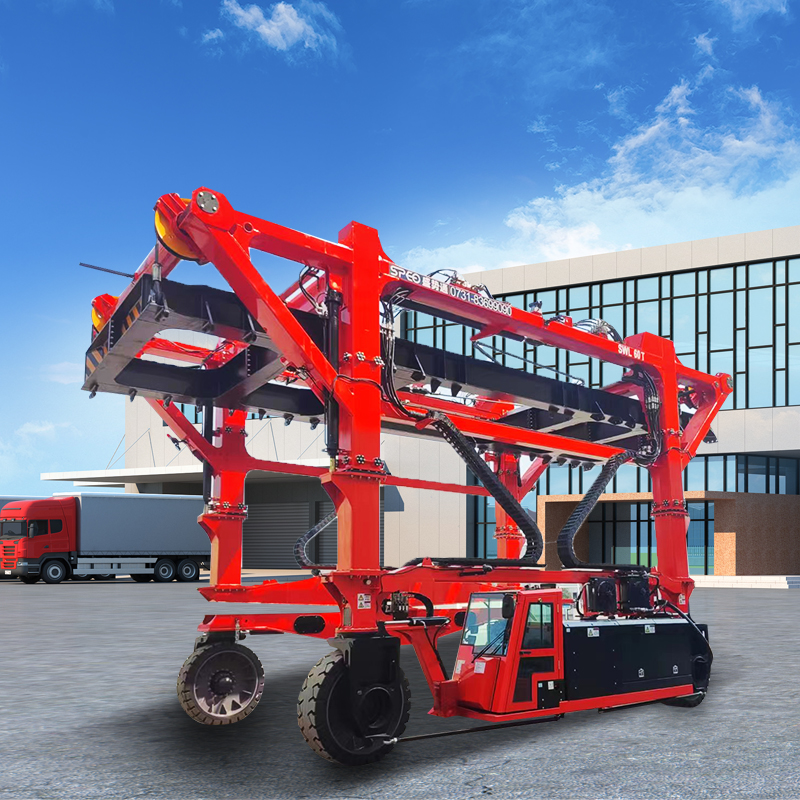- Crane Selection Guide for Logistics Warehouses: A Comprehensive Practical Solution from Requirements to Implementation
-
Release Time:2025-10-22 15:13:35Share:
Crane Selection Guide for Logistics Warehouses: A Comprehensive Practical Solution from Requirements to Implementation
In modern logistics warehouse operations, cranes determine storage efficiency, safety, costs and future development, and are therefore core equipment. According to data from the China Federation of Logistics & Purchasing, cranes that are appropriately matched to a warehouse can boost goods turnover efficiency by over 40%. This article will explore six key areas, using examples from e-commerce, manufacturing, the cold chain and other types of warehouse to provide practical selection solutions.
1. Goods characteristics: Determining the basic suitability of cranes
The weight, shape and packaging method of goods directly influence the type and functionality of crane required:
Weight classification:
Small items under 1 tonne: Prioritise overhead cranes or light-duty aisle stackers. - Palletised goods weighing 1–10 tonnes: Bridge cranes or gantry cranes are suitable. - Heavy goods over 10 tons: Require custom-built, heavy-duty bridge cranes with verified main beam material.
Shape variations: Hook-type cranes are suitable for standardised goods such as boxed or bagged items. For steel or pipes, electromagnetic lifters or clamping devices prevent slippage during handling. Cranes with 'variable-frequency lifting' (acceleration ≤0.5 m/s²) are required for fragile goods to minimise cargo sway.
Special attributes: Crane installations in cold chain warehouses require motors and seals that can withstand low temperatures to prevent component malfunction. Chemical warehouses storing flammable or explosive materials must use explosion-proof cranes to prevent electrical sparks from igniting hazards.

2. Warehouse space: Determining Crane Size Compatibility
Spatial parameters are hard constraints for selection and require precise, advance measurement.
Clear height vs. lifting height: The crane's lifting height must be 0.8–1.2 metres less than the warehouse's clear height to accommodate lighting fixtures, fire sprinkler pipes and safety clearance. For an 8-metre-high warehouse, select a lifting height of 6.8–7.2 metres. In multi-level warehouses, the floor load capacity of upper floors (second level and above) must be considered, prioritising lightweight bridge cranes.
Span and track width: the span of a bridge crane must match the warehouse column spacing, typically 0.5 metres less to avoid collisions with columns. The track width for a gantry crane is determined by the yard width. For example, for a 15-metre-wide yard, a 14-metre track width would cover most operational areas.
Aisle width: for warehouses with narrow aisles of ≤3 metres, suspended or monorail cranes are required to utilise the overhead space. For transfer warehouses with wide aisles of ≥6 metres, double-girder overhead cranes can be used to improve operational coverage.
3. Operating frequency: Determining Crane Duty Class Compatibility
The crane's duty cycle (classified as A1–A8 according to GB/T 3811–2008) has a direct impact on the equipment's lifespan and failure rates. Selection should be based on daily operating duration and frequency:
Light duty (A1–A3): ≤2 hours of operation per day. Suitable for small spare parts warehouses or seasonal storage facilities. Cost-effective cranes can be selected to control procurement expenses.
Medium duty (A4–A6): Daily operation of 2–8 hours. Suitable for standard e-commerce warehouses and manufacturing raw material storage. These facilities require stable equipment; cranes rated A5 or higher are recommended. Their F-class motor insulation can withstand frequent starts and stops.
Heavy Duty (A7-A8): Daily operation of at least 8 hours. Suitable for large transfer warehouses, port logistics facilities and 24/7 e-commerce sorting centres. They require A7-level or higher cranes, which are equipped with dual-motor drive systems to prevent single-motor overload damage.

II. Matching Crane Types by Scenario
1. Overhead cranes: The all-rounder for indoor large warehouses
Core advantages: - Large span (5–35 metres)
- Heavy load capacity (1–50 tonnes)
- Extensive operational coverage They are capable of lateral and longitudinal movement along tracks and are suitable for multi-bay, continuous warehouses.
Suitable scenarios: Third-party logistics transfer warehouses requiring frequent cross-area handling; manufacturing finished goods warehouses; and e-commerce regional warehouses. JD.com's Asia No. 1 warehouse uses 20 A5-class bridge cranes integrated with a WMS system to automate goods handling and boost daily turnover efficiency by 50%.
Considerations: Overhead track installation is required on warehouse roofs. Structural requirements: The main beam load capacity must be ≥1.2 times the crane's self-weight. Sufficient clearance must be reserved during installation to avoid conflicts with fire sprinkler pipes and ventilation equipment.
2. Gantry cranes: Flexible solutions for outdoor/semi-open warehouses
Core advantages: - Independent of indoor structural constraints
- Suitable for outdoor yards, semi-open warehouses and port bonded warehouses Select models feature 'cross-track movement' for irregular yard layouts.
Suitable applications: Port logistics yards for handling container trucks, building material warehouses for storing steel and cement, and outdoor yards for storing temporary construction materials. For instance, a port cold chain logistics park deployed ten gantry cranes with rain shelters and low-temperature resistant devices, enabling 24/7 container handling with no loss of efficiency during winter operations.
Precautions: Outdoor operations require additional wind-resistant devices, such as rail clamps and anchoring systems with a wind resistance rating of at least 8. Ground tracks require regular maintenance to prevent rust caused by water accumulation.
3. Aisle stackers: The 'core equipment' of automated storage and retrieval systems (AS/RS).
Core advantages: High automation (interoperable with AGVs and WMS systems); exceptional space utilisation (triples storage capacity compared to traditional warehouses); ideal for high-density storage scenarios.
Suitable scenarios: - Smart e-commerce warehouses (e.g. the Tmall Supermarket automated warehouse)
- Pharmaceutical cold chain warehouses (which require constant temperature and humidity)
- Electronic component warehouses (which require dustproofing) For instance, an automated warehouse belonging to a pharmaceutical company employs dual-column aisle stacker cranes that are integrated with temperature sensors and barcode recognition. This achieves full automation of the 'inbound – storage – outbound' process for pharmaceuticals, with an error rate of ≤0.01%.
Considerations: Precise matching with racking systems is required, with an aisle width tolerance of ≤5 mm. The operating speed must be adjusted based on the rack height. For racks exceeding 15 metres, the recommended speed is ≤15 m/min to prevent swaying. Regular cleaning of the guide rails and photoelectric sensors is essential to prevent dust affecting the positioning accuracy.
4. Overhead Crane: Space-saving solution for small/narrow warehouses
Core advantages: - Flexible installation along roof beams or independent tracks
- Minimal footprint
- User-friendly operation Ideal for light-load, agile work scenarios.
Suitable scenarios: Automotive parts warehouses in dealerships; small electronics factory warehouses; and temporary handling zones within workshops. Example: An automotive parts warehouse implemented a monorail overhead crane with manual hoists to enable direct transport of parts “from shelf to repair station”, reducing labour costs by 30%.
Important notes: The load capacity is typically ≤5 tons and it is not suitable for heavy cargo. Rail installation must be level with a deviation of ≤3 mm/10 m to prevent stuttering during operation. Regularly inspect suspension point bolts to prevent safety hazards caused by loosening.
III. Focus on Key Parameters
1. Duty cycle: Determines equipment durability
Duty cycle is defined by both usage grade and load condition. For example, grade A5 corresponds to 'T5+Q2', which is suitable for medium-load scenarios involving 4–6 hours of daily operation. Note on selection: if the actual operating frequency exceeds the equipment's duty cycle, it will cause the motors and brakes to age prematurely, shortening the service life by over 50%.
2. Lifting height and speed
Lifting height: This must cover the distance from the lowest warehouse shelf to the highest shelf, plus a 0.5 metre safety clearance.
Lifting speed: High-speed and low-speed modes are available. Select the low speed mode (2–5 m/min) for heavy or fragile goods and the high speed mode (8–12 m/min) for standard cargo. Some premium models feature "variable frequency speed control" which automatically adjusts the speed based on the characteristics of the cargo.
3. Travel speed and braking performance: Ensuring 'operational efficiency and safety'.
Travel speed: the main trolley speed along the span is typically 10–30 m/min, while the auxiliary trolley speed along the main beam is 5–20 m/min. Adjust this based on warehouse size: select a high speed for large warehouses and a low speed for small ones to minimise frequent starts and stops.
Braking performance: must feature dual braking (electromagnetic + mechanical). The braking response time after power loss is ≤0.5 seconds. Brake wheel wear must not exceed one third of the original thickness. Replace promptly to prevent brake failure.
4. Limit switches and safety devices
The crane must incorporate five safety protections:
Lifting height limit switch: Prevents the hook from colliding with overhead structures.
- Travel Limit Switch: Prevents collision of the equipment with columns or end beams.
Load limit switch: Automatically alarms and cuts lifting power during overload. Overload protection accuracy: ≤5%.
- Wire rope break protection: Automatically locks the hook upon wire rope failure to prevent cargo drop.
- Emergency stop button: Can be triggered from any location on the equipment with a response time of ≤0.3 seconds.
5. Energy consumption and environmental protection
Motor efficiency: Prioritise IE3 or higher efficiency motors to achieve over 15% energy savings compared to IE2 motors.
Variable frequency technology: Cranes with VFD functionality reduce hoisting and travel energy consumption by 20–30%.
Eco-friendly materials: Coatings must comply with VOC emission standards to prevent air pollution in warehouses.
IV. Safety Compliance:
1. Equipment compliance: Adherence to national standards and industry regulations
Product qualification certificates and type test reports must be obtained under GB/T 3811-2008 “Design Specifications for Cranes” and GB 6067.1-2010 “Safety Regulations for Lifting Machinery”.
2. Material adaptability: Addressing Special Environmental Challenges
Humid Environments: Crane bodies require hot-dip galvanisation with a rust prevention grade of at least Sa2.5, as specified in GB/T 18226-2015.
High-temperature chemical storage (temperature ≥40°C): Motors must use Class H insulation, which can withstand temperatures of up to 180°C.
Dust-prone environments (e.g. grain/feed silos): Equipment requires sealed designs to prevent dust ingress into motors and bearings.
V. Reserving Space for Intelligent Upgrades
1. System integration capability
The crane must support integration with warehouse management systems (WMS), intelligent dispatch systems (WCS) and IoT platforms to achieve seamless connectivity across the entire 'order – dispatch – operation – data feedback' workflow. For example, uploading crane operation data to the cloud via API interfaces enables real-time monitoring of equipment status and cargo handling progress.
2. Smart component integration
Reserve interfaces for smart component installation, such as:
Weight sensors: - Real-time load monitoring to prevent overloading
- AI vision recognition: Automatic cargo positioning to enhance grasping accuracy
- Energy consumption monitoring modules: Track equipment energy usage to optimise operational workflows.
Unmanned operation systems: A future upgrade path to 'unmanned cranes' for dark, hazardous or otherwise inhospitable environments.
3. Compatibility design: equipment structures must support future retrofits. For example, bridge cranes should reserve space for 'adding auxiliary hooks', while aisle stackers can be expanded to 'dual forks' functionality to accommodate evolving operational demands.
Summary: Crane selection for logistics warehouses
Requirement survey: Measure warehouse clearance height, span and aisle width; document cargo characteristics (weight, shape and special attributes); and record daily operating duration and frequency.
Model screening: Match crane types (bridge, gantry, aisle stacker, overhead) to requirements, eliminating those that are clearly unsuitable.
Parameter verification: Compare core specifications such as duty cycle, lifting height and braking performance to ensure that operational requirements are met.
Compliance and service evaluation: Confirm that the equipment meets national standards and assess the manufacturer's after-sales service capabilities and case studies.
Consider upgrade potential: Evaluate the equipment's smart integration and expansion capabilities to accommodate future development.
As a leading global crane supplier, Henan Mine Crane offers a comprehensive range of products from 5 to 500 tons. We provide custom designs based on site drawings, load characteristics and environmental parameters. Our full lifecycle services deliver all-in-one solutions, from site surveys and design planning to installation, commissioning and regular maintenance.
Email: infocrane@henanmine.com
